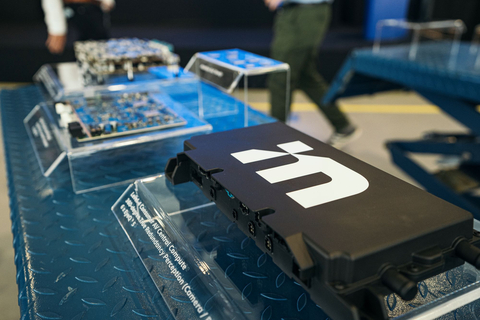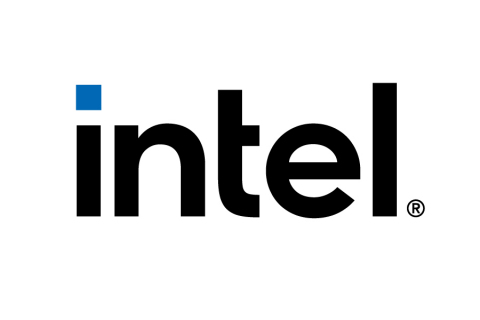Mobileye Launches EyeQ Kit: New SDK for Advanced Safety and Driver-Assistance Systems
Mobileye Launches EyeQ Kit: New SDK for Advanced Safety and Driver-Assistance Systems
Toolkit builds on two decades of Mobileye safety and driver-assistance technology to provide new flexibility for future software-defined vehicles.
In July 2022, Mobileye launches the EyeQ Kit to power driver-assistance and future autonomous technologies for automakers. The first software development kit from Mobileye for its EyeQ system-on-chip, EyeQ Kit allows automakers to utilize the company's proven core technology while deploying their own differentiated code and human-machine interface tools on the EyeQ platform. (Credit: Mobileye, an Intel Company)
SANTA CLARA, Calif.--(BUSINESS WIRE)--What’s new: Mobileye, an Intel company, has launched the EyeQ Kit™ – its first software development kit (SDK) for the EyeQ® system-on-chip that powers driver-assistance and future autonomous technologies for automakers worldwide. Built to leverage the powerful and highly power-efficient architecture of the upcoming EyeQ®6 High and EyeQ®Ultra processors, EyeQ Kit allows automakers to utilize Mobileye's proven core technology, while deploying their own differentiated code and human-machine interface tools on the EyeQ platform.
“EyeQ Kit allows our customers to benefit from the best of both worlds — Mobileye's proven and validated core technologies, along with their own expertise in delivering unique driver experiences and interfaces. As more core functions of vehicles are defined in software, we know our customers will want the flexibility and capacity they need to differentiate and define their brands through code.”
– Prof. Amnon Shashua, Mobileye president and chief executive officer
How it Works: Through EyeQ hardware and software, automakers have access to a broad set of Mobileye solutions, including computer vision, REM™ crowdsourced mapping, and RSS-based driving policy. Using EyeQ Kit, automakers can further leverage the power of Mobileye’s system-on-chip to augment the advanced driver functions with a look and feel that is unique to their brands. And as the visual demands for interaction and communication between drivers and vehicles grows more complex, EyeQ Kit gives automakers a new path to tailor critical information flows. EyeQ Kit will help support features such as surround visualization, automated lane-keeping, and road-sign recognition through more advanced augmented reality displays.
EyeQ Kit was developed by hundreds of Mobileye engineers drawing on deep experience across Intel and Mobileye, with experts in compilers and development environments such as OpenCL standards, leveraging compilation frameworks used for intensive computing and deep learning. This approach allows automakers to develop their own applications easily and efficiently. It also opens the ability to co-host third-party applications, which lowers the costs of integrating other chips.
Why it Matters: From general-purpose CPU cores to high compute-dense accelerators – including deep-learning neural networks – EyeQ has a scalable and modular architecture that seeks to achieve high performance while offering a suitable power efficiency to deploy artificial intelligence at the edge for automotive applications. Previous generations of the EyeQ chip have been deployed in more than 100 million vehicles, with dozens of the world’s largest automakers using them to provide safety and driver-assistance features in hundreds of models worldwide.
Now, EyeQ Kit aims to reduce development costs, accelerate time to market and enable hardware vendor flexibility for the full development cycle – from conception to deployment and performance tuning.
“Mobileye’s core technologies of computer vision, driving policy, REM and RSS are driven by purpose built SoCs allowing for scale and efficiency. Automakers can now build on top of Mobileye’s core technologies while benefiting from our diverse set of accelerators purpose built for ADAS and AV. Automakers can rely on the EyeQ Kit and EyeQ processor family to bring a technologically advanced vision for their brands to life, quickly and efficiently,” Shashua said.
EyeQ Kit has already been deployed with one major global automaker for future vehicle programs.
About Mobileye
Mobileye is a leader in the development and deployment of advanced driver assistance systems (ADAS) and autonomous driving technologies and solutions. Mobileye pioneered ADAS technology more than 20 years ago and has continuously expanded the scope of its ADAS offerings, while leading the evolution to autonomous driving solutions. For more information, go to www.mobileye.com.
About Intel
Intel (Nasdaq: INTC) is an industry leader, creating world-changing technology that enables global progress and enriches lives. Inspired by Moore’s Law, we continuously work to advance the design and manufacturing of semiconductors to help address our customers’ greatest challenges. By embedding intelligence in the cloud, network, edge and every kind of computing device, we unleash the potential of data to transform business and society for the better. To learn more about Intel’s innovations, go to newsroom.intel.com and intel.com.
Forward Looking Statements
Statements in this press release that refer to future plans and expectations are forward-looking statements that involve a number of risks and uncertainties. Words such as “anticipates,” “expects,” “intends,” “goals,” “plans,” “believes,” “seeks,” “estimates,” “continues,” “may,” “will,” “would,” “should,” “could,” and variations of such words and similar expressions are intended to identify such forward-looking statements. Statements that refer to or are based on estimates, forecasts, projections, uncertain events or assumptions, including statements relating to future products and technology and the availability and benefits of such products and technology, expectations regarding customers, market opportunity, and anticipated trends in our businesses or the markets relevant to them, also identify forward-looking statements. Such statements are based on current expectations and involve many risks and uncertainties that could cause actual results to differ materially from those expressed or implied in these forward-looking statements. Important factors that could cause actual results to differ materially are set forth in Intel’s SEC filings, including the company’s most recent reports on Forms 10-K and 10-Q, which may be obtained by visiting our Investor Relations website at www.intc.com or the SEC’s website at www.sec.gov. Intel does not undertake, and expressly disclaims any duty, to update any statement made in this press release, whether as a result of new information, new developments or otherwise, except to the extent that disclosure may be required by law.
© Intel Corporation. Intel, the Intel logo and other Intel marks are trademarks of Intel Corporation or its subsidiaries. Other names and brands may be claimed as the property of others.
Contacts
Justin Hyde
1-202-531-9270
justin.hyde@mobileye.com

